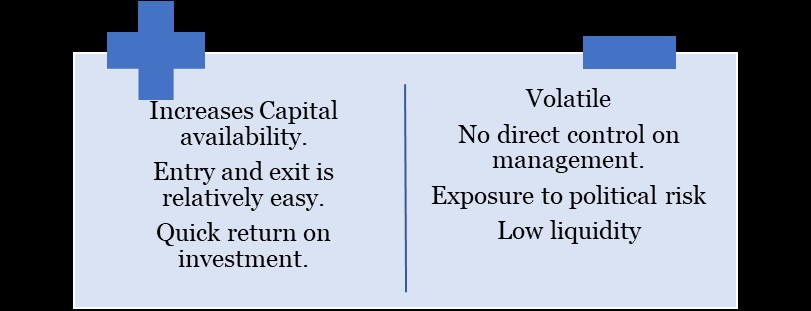SEBI floated a consultation paper that proposed additional disclosures from Foreign Portfolio Investors (FPIs).

|
|
Foreign Direct Investment (FDI) |
Foreign Portfolio Investment (FPI) |
|
Definition |
Investment made by foreign investors to obtain a substantial interest in the enterprise located in a different country. |
Investing in the financial assets of a foreign country, such as stocks or bonds available on an exchange. |
|
Type |
Direct Investment |
Indirect Investment |
|
Market |
Inflows in primary market |
Inflows in secondary market |
|
Role of Investors |
Active Investor |
Passive Investor |
|
Degree of Control |
High control |
Very low control |
|
Term |
Long term investment |
Short term investment |
|
Investment is done on |
Physical assets of the foreign country |
Financial assets of the foreign country |
|
Entry and Exit |
Difficult |
Relatively easy |
|
Risks Involved |
Stable |
Volatile |